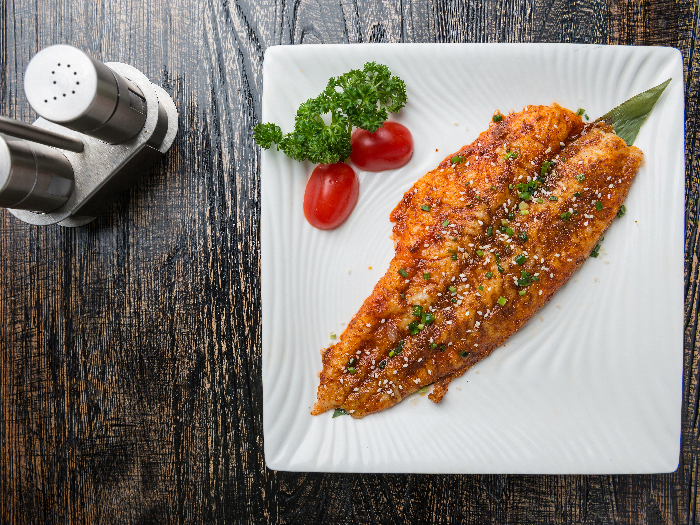Basa fish is a popular variety of whitefish that is native to Southeast Asia and exported to various parts of the world due to its affordability, nutrient density, and potential health benefits.
What is Basa Fish?
Basa fish (Pangasius bocourti) is a variety of catfish found throughout Vietnam, Thailand, and in the other parts of Indochina. This fish is quite popular due to its similar flavor and consistency to haddock or cod, but it has a much lower price. The low price is largely due to how easily they grow and can be harvested both in the wild (rivers) and in large fish farms. If you don’t recognize the name “basa”, you may have known this mildly flavored fish by other names such as “swai”, “bocourti”, “river cobbler”, and “pangasius”, just to name a few. [1]
These fish feed primarily on plants and can grow up to four feet in length. They remain a very competitive product in international export markets. Due to the name “catfish” that is often applied to this fish, in addition to its low price, basa fish does quite well in the US and UK markets, among others.
Nutrition
While there are some concerns about the safety of imported basa fish, it is very nutrient-dense, and like most varieties of whitefish, it has a low-calorie count and is high in protein. As per the USDA’s FoodData Central, i [2]n a 100-gram serving of this fish, a single small filet, there is approximately 88 calories and 13 grams of protein, along with 4 grams of fat and moderate amounts of sodium and iron. It also contains roughly 40 mg of cholesterol, so moderation is key to prevent elevated levels.

Basa is a type of white fish native to Southeast Asia. Photo Credit: Shutterstock
Health Benefits
Although there is a limited range of nutrients present in this type of fish, they can still have a measurable effect on your health. Basa fish can increase energy levels, promote weight loss, and improve cardiovascular and brain health.
- Cardiovascular Health: Basa fish does contain 4 grams of fat per serving, but a good deal of those fats are omega-3 fatty acids. This is shown to protect heart health, as per the study published in Food Chemistry. DHA and EPA are two of the best fatty acids for overall health, and both are present in this catfish variety. [3]
- Protein Content: Proteins can be burned by the body to generate energy, which is why high-protein diets remain so popular. They also help to avoid the “crash” of carb-heavy diets, once those simple sugars are burned up and expended. Eating a few servings of high-protein fish like basa each week can help to ensure your energy levels remain stable and sustained. [4]
- Weight Loss: One of the best things about adding fish to your diet is the typically low-calorie count. In the case of basa fish, you can derive plenty of energy and nutrients with a filet. [5]
- Muscle and Cell Growth: Protein provides the body with amino acids, the building blocks of cells and every other tissue and fiber in the body. Whether your body needs to repair the damage, develop muscles, or continue growing, a regular supply of protein is essential. Basa fish is a complete protein, providing the body with all nine essential amino acids. [6]
Safety and Risks
As mentioned above, there have been concerns about the health and safety of basa fish imported from Indochina, but studies have found that there is no greater risk of eating basa than any other type of fish. That being said, you should adopt some caution when eating basa fish that have been grown in fish farms, as some of those fish are treated with additional chemicals. [7]
Note: The disruptive capabilities of this fish in international fishing markets, as a result of its affordability, may have led to some of the bad press that it has received in both the US and UK.
How to Eat?
There are several ways in which this fish can be prepared, but as a somewhat delicate whitefish, it is best not to make it too complicated. In most markets, you will find basa fish in the form of boneless filets.
- Step 1: Preheat the oven to 400 degrees Fahrenheit.
- Step 2: After seasoning the fish in whatever way you choose, place the 4-5 ounce basa filets on an oiled cooking sheet. Coat the fish in salt, pepper, cornmeal, and dried herb mixture.
- Step 3: Bake the fish for 15-20 minutes.
- Step 4: Allow the fish to cool for 2-3 minutes.
- Step 5: Serve with lemon garnish and fresh parsley.
